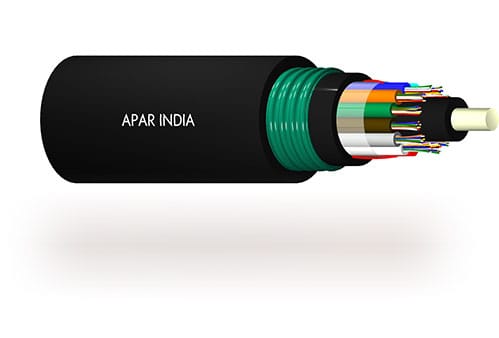
APAR’s customised cables cater to high-bandwidth applications of data centres, global internet companies, ISPs and telcos,citizen network services and installations along the railway tracks.
APAR’s customised cables cater to high-bandwidth applications of data centres, global internet companies, ISPs and telcos, citizen network services and installations along the railway tracks. We offer a wide range of cables, including aerial, underground, micro duct, ribbon, IO and indoor, last mile connectivity and special application cables.
Composite cables are those cables in which two or more types of fibres are held in one cable. Fibre counts and the type of optical fibre to be used varies by the application, the distance signals are required to travel and the speed of transmission. The cable construction depends on various factors like the environmental conditions at the installation site, whether the use is indoors or outdoors, where it is to be used within a dry wall, in a public or private area, whether it needs to have special LSZH materials or not.
| Application | Fibre optic cables are used for a wide range of applications: from carrying telephone calls (up to several million calls per cable) to high speed data transfer for vast computer networks. |
|---|---|
| Characteristics | For critical applications, APAR fibre optic range of cables are available in fire resistant (IEC 60331) versions, in addition to other specific requirements. |
| Applicable standards | IEC 60793, IEC 60794, Telcordia GR -20, TIA/EIA 598 |
| Product range | Under multi loose tube optical cables, APAR offers the following types: Direct buried, duct and aerial, and cables for indoor use in conduits 2-512 fibres per cable; 1-24 fibres per filled loose buffer tube Custom and composite cables Composite single and multi mode fibres |
| Advantages | Fibre optic cables play an important role in running global internet services, in an efficient and effective manner. Fibre optic cables are much superior to standard copper cables, as fibre optic cables of same thickness support higher bandwidth capacity and can transmit data over longer distances. It allows telecom network providers reach remotest locations across the globe. |
